AKADEMIYA2063’s COVID-19 portal
Macro Effects of Trade Disruption
GLOBAL COMMODITY MARKET DISRUPTIONS AND AFRICAN ECONOMIES
The pandemic has not left a single region of the world untouched. Its disruptive effects have equally reached into every corner of the global economy. Global primary commodity markets in particular are affected by many of the measures taken to adapt to and control the spread of the pandemic. Measures to minimize the risk of cross-border infections interfere with the normal operations of commerce, slowing down or impeding the movement of goods around the globe. The changes affecting global supply chains can have significant repercussion on national economies. Changes in prices received for exports or paid for imports translate into gains or losses of foreign exchange earnings. The same applies to changes in availability of cargo or the operation of airports and ports, as they affect the cost and volume of goods shipped. Changes in consumer behavior, including under confinement conditions or otherwise, have similar consequences.
The forces of supply and demand ultimately dictate which prices move in which direction. Individual economies are affected based on the exposure to shocks in different markets, which in turn depends on the bundle of goods they sell to or buy from foreign markets. The more their exports or imports are skewed towards goods for which global prices move favorably, the more they tend to benefit and vice versa.
Changes in exported and imported quantities as well as related prices are transmitted to domestic firms and consumers, resulting in changes in production activities and demand for goods, which in turn affect the pace of growth, available incomes and thus livelihoods. The final impact depends on the ability of the economy to adjust to the changing market conditions. The more an economy finds ways to compensate for changes in prices or traded quantities, the more it is likely to minimize the negative impact from global market disruptions.
INTRODUCTION
The COVID-19 pandemic is affecting African economies through many avenues, including global financial and capital markets, global commodity trade and markets, local supply and demand for products, and local labor markets and employment. This workstream focuses on disruptions in global commodity trade caused by COVID-19 and their effects on trade, growth and poverty in African countries. The analysis employs existing single-country Computable General Equilibrium (CGE) models for economywide analysis combined with microsimulation models for poverty analysis and is informed by the latest available country survey data, economywide social accounting matrices, international commodity price data and forecasts, and global trade data. The effects of COVID-19 are evaluated by comparing a pre-COVID-19 scenario based on previously existing commodity price forecasts with a COVID-19 scenario based on updated forecasts. A commodity price scenario is built for each country based on the composition of its external trade and is used to assess the impacts of COVID-19- related trade disruptions.
Bulletins
Briefs
Data, charts and maps
_thumb.png)
Change in Import Price Indices Between October 2019 and April 2020 Forecasts, East Africa (Percentage Point)
_thumb.png)
Changes in Export Price Indices Between October 2019 and April 2020 Forecasts, East Africa (Percentage Point)

Changes in predicted prices in 2020 for 46 primary commodities

Note: Differences between prices forecast in April 2020 and in October 2019 in percentage point (pp)
Source: Computation from the World Bank Commodity Price Forecasts, October 2019 and April 2020. Data retrieved in July 2020 from https://www.worldbank.org/en/research/commodity-markets

Change in predicted Prices in 2020 for Top Ten Primary Commodities Imported by Uganda

Source: Computed from the Commodity Market Outlook (World Bank). Data retrieved in July 2020 from https://www.worldbank.org/en/research/commodity-markets
Note: Differences between prices forecast in April 2020 and in October 2019 are in percentage points (pp).
Download image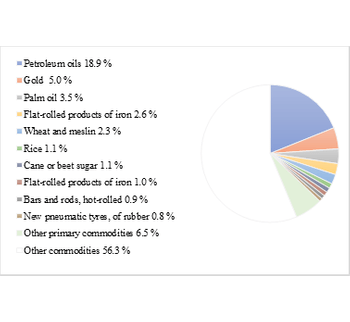
Share of Top Ten Primary Commodities in Uganda’s Total Imports in 2018
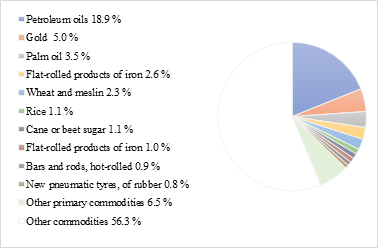
Source: Computed from United Nations Commodities trade Database, United Nations DESA. Data retrieved in July 2020 from https://comtrade.un.org/data
Download image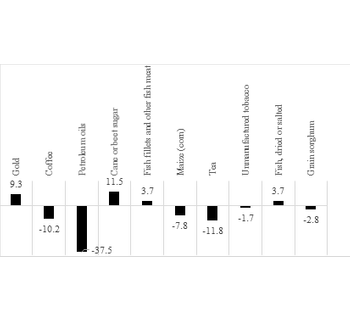
Change in predicted Prices in 2020 for Top Ten Primary Commodities Exported by Uganda

Source: Computed from the Commodity Market Outlook (World Bank). Data retrieved in July 2020 from https://www.worldbank.org/en/research/commodity-markets
Note: Differences between prices forecast in April 2020 and in October 2019 are in percentage points (pp).
Download image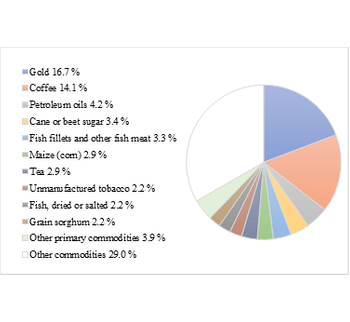
Share of Top Ten Primary Commodities in Uganda’s Total Exports in 2018

Source: Computed from United Nations Commodities trade Database, United Nations DESA. Data retrieved in July 2020 from https://comtrade.un.org/data
Download image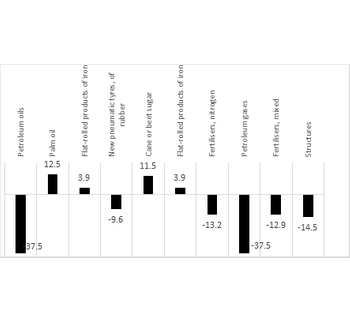
Change in predicted Prices in 2020 for Top Ten Primary Commodities Imported by Tanzania

Source: Computed from the Commodity Market Outlook (World Bank). Data retrieved in July 2020 from https://www.worldbank.org/en/research/commodity-markets
Note: Differences between prices forecast in April 2020 and in October 2019 are in percentage points (pp).
Download image
Share of Top Ten Primary Commodities in Tanzania’s Total Imports in 2018

Source: Computed from United Nations Commodities trade Database, United Nations DESA. Data retrieved in July 2020 from https://comtrade.un.org/data
Download image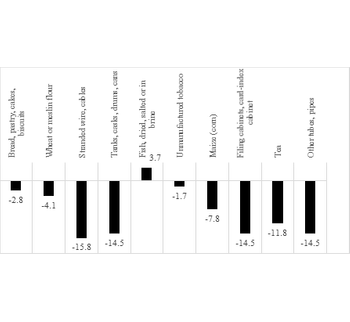
Change in predicted Prices in 2020 for Top Ten Primary Commodities Exported by Tanzania

Source: Computed from the Commodity Market Outlook (World Bank). Data retrieved in July 2020 from https://www.worldbank.org/en/research/commodity-markets
Note: Differences between prices forecast in April 2020 and in October 2019 are in percentage points (pp).
Download image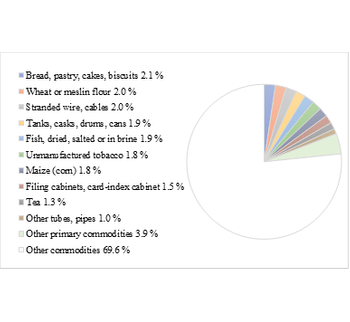
Share of Top Ten Primary Commodities in Tanzania’s Total Exports in 2018
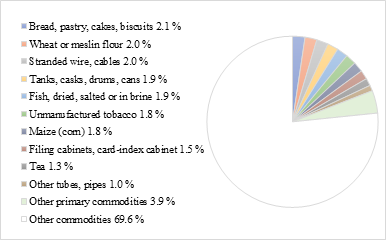
Source: Computed from United Nations Commodities trade Database, United Nations DESA. Data retrieved in July 2020 from https://comtrade.un.org/data
Download image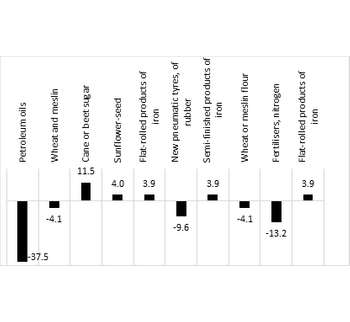
Change in predicted Prices in 2020 for Top Ten Primary Commodities Imported by Sudan

Source: Computed from the Commodity Market Outlook (World Bank). Data retrieved in July 2020 from https://www.worldbank.org/en/research/commodity-markets
Note: Differences between prices forecast in April 2020 and in October 2019 are in percentage points (pp).
Download image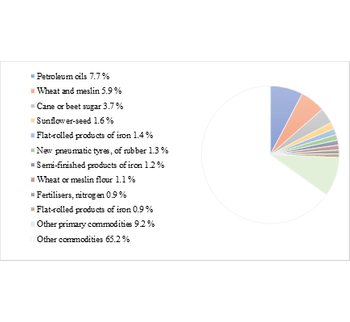
Share of Top Ten Primary Commodities in Sudan’s Total Imports in 2017

Source: Computed from United Nations Commodities trade Database, United Nations DESA. Data retrieved in July 2020 from https://comtrade.un.org/data
Download image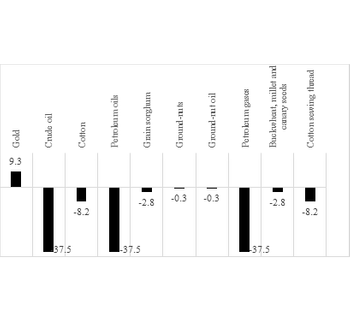
Change in predicted Prices in 2020 for Top Ten Primary Commodities Exported by Sudan

Source: Computed from the Commodity Market Outlook (World Bank). Data retrieved in July 2020 from https://www.worldbank.org/en/research/commodity-markets
Note: Differences between prices forecast in April 2020 and in October 2019 are in percentage points (pp).
Download image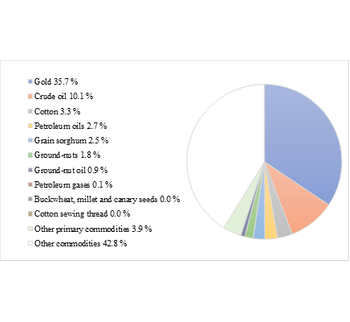
Share of Top Ten Primary Commodities in Sudan’s Total Exports in 2017
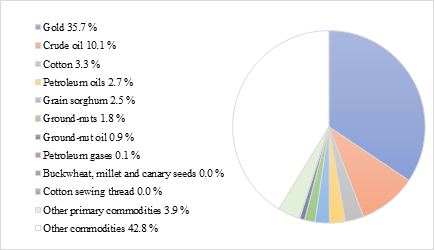
Source: Computed from United Nations Commodities trade Database, United Nations DESA. Data retrieved in July 2020 from https://comtrade.un.org/data
Download image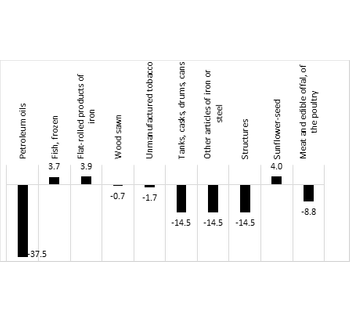
Change in predicted Prices in 2020 for Top Ten Primary Commodities Imported by Seychelles

Source: Computed from the Commodity Market Outlook (World Bank). Data retrieved in July 2020 from https://www.worldbank.org/en/research/commodity-markets
Note: Differences between prices forecast in April 2020 and in October 2019 are in percentage points (pp).
Download image
Share of Top Ten Primary Commodities in Seychelles’ Total Imports in 2019
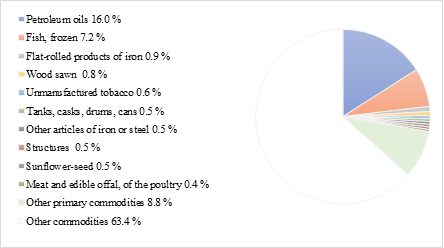
Source: Computed from United Nations Commodities trade Database, United Nations DESA. Data retrieved in July 2020 from https://comtrade.un.org/data
Download image
Change in predicted Prices in 2020 for Top Ten Primary Commodities Exported by Seychelles

Source: Computed from the Commodity Market Outlook (World Bank). Data retrieved in July 2020 from https://www.worldbank.org/en/research/commodity-markets
Note: Differences between prices forecast in April 2020 and in October 2019 are in percentage points (pp).
Download image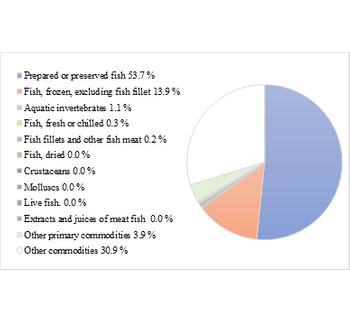
Share of Top Ten Primary Commodities in Seychelles’ Total Exports in 2019
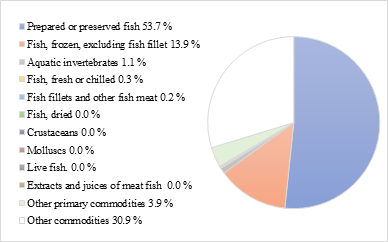
Source: Computed from United Nations Commodities trade Database, United Nations DESA. Data retrieved in July 2020 from https://comtrade.un.org/data
Download image
Change in predicted Prices in 2020 for Top Ten Primary Commodities Imported by Rwanda
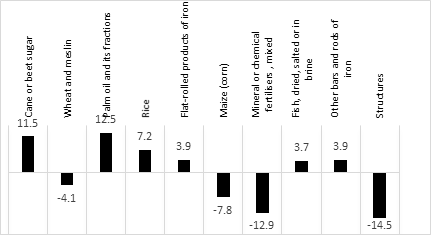
Source: Computed from the Commodity Market Outlook (World Bank). Data retrieved in July 2020 from https://www.worldbank.org/en/research/commodity-markets
Note: Differences between prices forecast in April 2020 and in October 2019 are in percentage points (pp).
Download image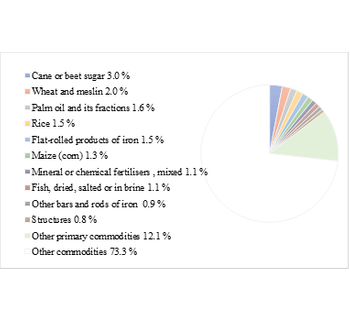
Share of Top Ten Primary Commodities in Rwanda’s Total Imports in 2016
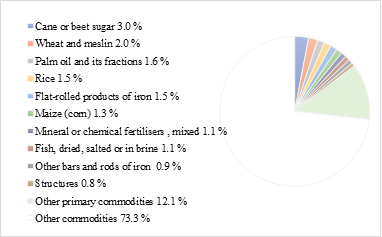
Source: Computed from United Nations Commodities trade Database, United Nations DESA. Data retrieved in July 2020 from https://comtrade.un.org/data
Download image
Change in predicted Prices in 2020 for Top Ten Primary Commodities Exported by Rwanda

Source: Computed from the Commodity Market Outlook (World Bank). Data retrieved in July 2020 from https://www.worldbank.org/en/research/commodity-markets
Note: Differences between prices forecast in April 2020 and in October 2019 are in percentage points (pp).
Download image
Share of Top Ten Primary Commodities in Rwanda’s Total Exports in 2016

Source: Computed from United Nations Commodities trade Database, United Nations DESA. Data retrieved in July 2020 from https://comtrade.un.org/data
Download image
Change in predicted Prices in 2020 for Top Ten Primary Commodities Imported by Mauritius
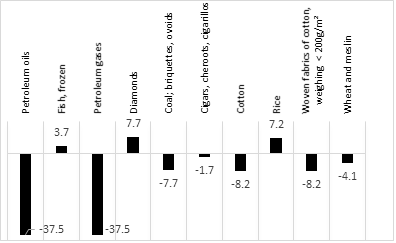
Source: Computed from the Commodity Market Outlook (World Bank). Data retrieved in July 2020 from https://www.worldbank.org/en/research/commodity-markets
Download image
Share of Top Ten Primary Commodities in Mauritius’s Total Imports in 2019
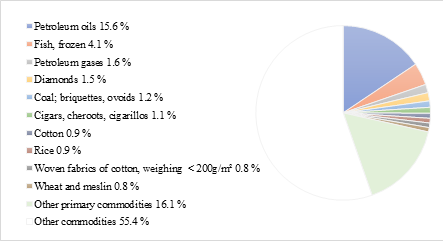
Source: Computed from United Nations Commodities trade Database, United Nations DESA. Data retrieved in July 2020 from https://comtrade.un.org/data
Download image
Change in predicted Prices in 2020 for Top Ten Primary Commodities Exported by Mauritius
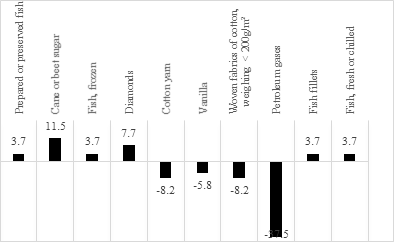
Source: Computed from the Commodity Market Outlook (World Bank). Data retrieved in July 2020 from https://www.worldbank.org/en/research/commodity-markets
Note: Differences between prices forecast in April 2020 and in October 2019 are in percentage points (pp).
Download image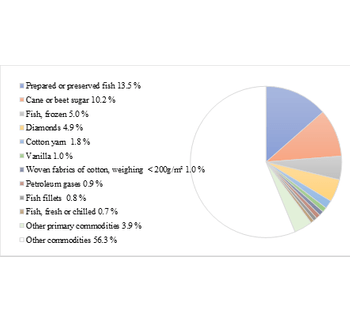
Share of Top Ten Primary Commodities in Mauritius’s Total Exports in 2019

Source: Computed from United Nations Commodities trade Database, United Nations DESA. Data retrieved in July 2020 from https://comtrade.un.org/data
Download image
Change in predicted Prices in 2020 for Top Ten Primary Commodities Imported by Madagascar
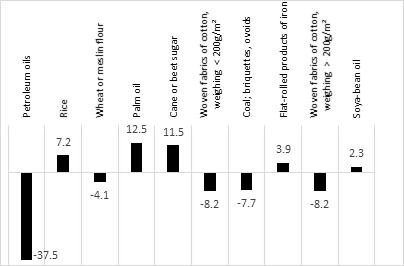
Source: Computed from the Commodity Market Outlook (World Bank). Data retrieved in July 2020 from https://www.worldbank.org/en/research/commodity-markets
Note: Differences between prices forecast in April 2020 and in October 2019 are in percentage points (pp).
Download image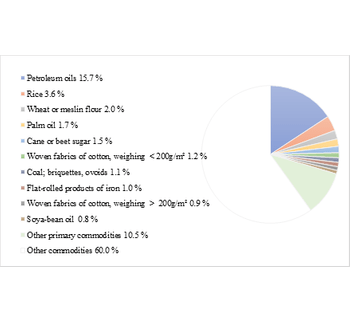
Share of Top Ten Primary Commodities in Madagascar’s Total Imports in 2019
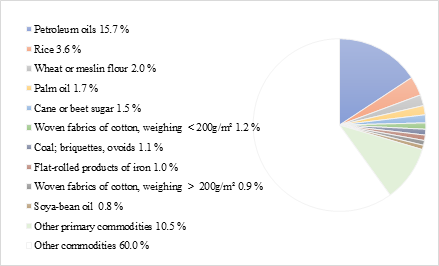
Source: Computed from United Nations Commodities trade Database, United Nations DESA. Data retrieved in July 2020 from https://comtrade.un.org/data
Download image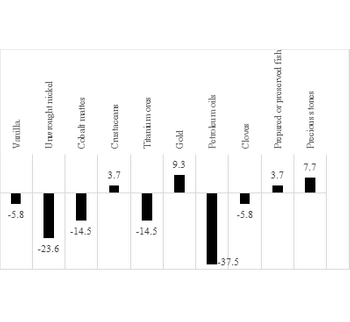
Change in predicted Prices in 2020 for Top Ten Primary Commodities Exported by Madagascar
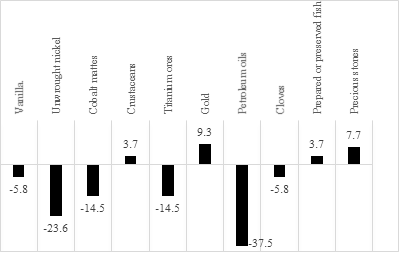
Source: Computed from the Commodity Market Outlook (World Bank). Data retrieved in July 2020 from https://www.worldbank.org/en/research/commodity-markets
Note: Differences between prices forecast in April 2020 and in October 2019 are in percentage points (pp).
Download image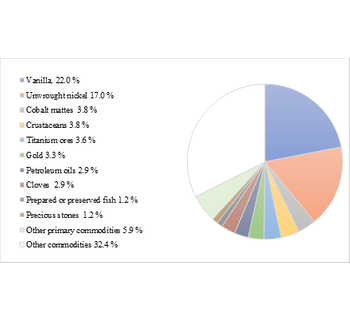
Share of Top Ten Primary Commodities in Madagascar’s Total Exports in 2019

Source: Computed from United Nations Commodities trade Database, United Nations DESA. Data retrieved in July 2020 from https://comtrade.un.org/data
Download image
Change in predicted Prices in 2020 for Top Ten Primary Commodities Imported by Kenya
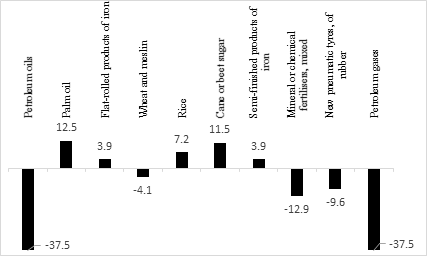
Source: Computed from the Commodity Market Outlook (World Bank). Data retrieved in July 2020 from https://www.worldbank.org/en/research/commodity-markets
Download image
Share of Top Ten Primary Commodities in Kenya’s Total Imports in 2018
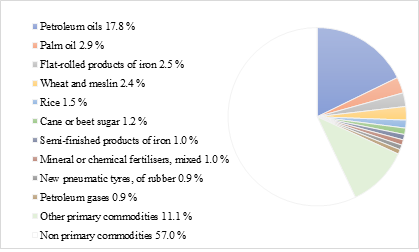
Source: Computed from United Nations Commodities trade Database, United Nations DESA. Data retrieved in July 2020 from https://comtrade.un.org/data
Download image
Change in predicted Prices in 2020 for Top Ten Primary Commodities Exported by Kenya

Source: Computed from the Commodity Market Outlook (World Bank). Data retrieved in July 2020 from https://www.worldbank.org/en/research/commodity-markets
Note: Differences between prices forecast in April 2020 and in October 2019 are in percentage points (pp).
Download image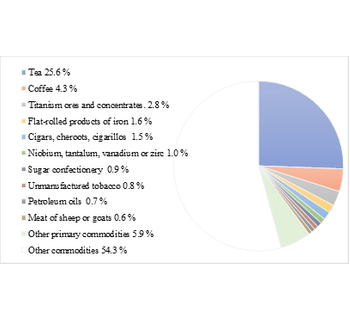
Share of Top Ten Primary Commodities in Kenya’s Total Exports in 2018

Source: Computed from United Nations Commodities trade Database, United Nations DESA. Data retrieved in July 2020 from https://comtrade.un.org/data
Download image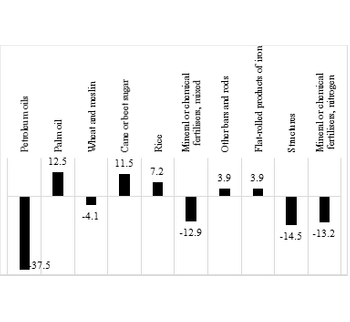
Change in predicted Prices in 2020 for Top Ten Primary Commodities Imported by Ethiopia

Source: Computed from the Commodity Market Outlook (World Bank). Data retrieved in July 2020 from https://www.worldbank.org/en/research/commodity-markets
Note: Differences between prices forecast in April 2020 and in October 2019 are in percentage points (pp).
Download image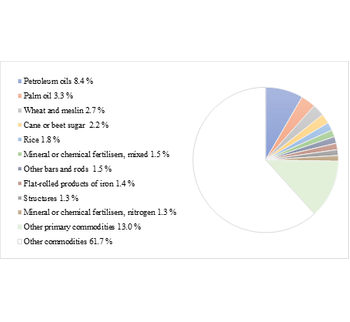
Share of Top Ten Primary Commodities in Ethiopia’s Total Imports in 2018
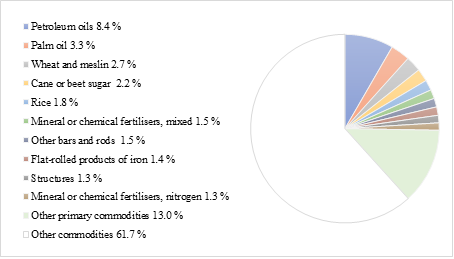
Source: Computed from United Nations Commodities trade Database, United Nations DESA. Data retrieved in July 2020 from https://comtrade.un.org/data
Download image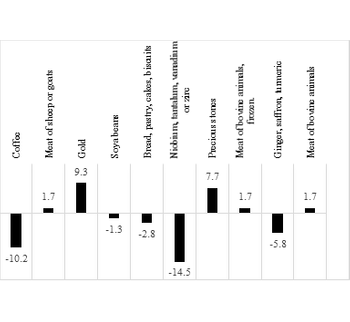
Change in predicted Prices in 2020 for Top Ten Primary Commodities Exported by Ethiopia

Source: Computed from the Commodity Market Outlook (World Bank). Data retrieved in July 2020 from https://www.worldbank.org/en/research/commodity-markets
Note: Differences between prices forecast in April 2020 and in October 2019 are in percentage points (pp).
Download image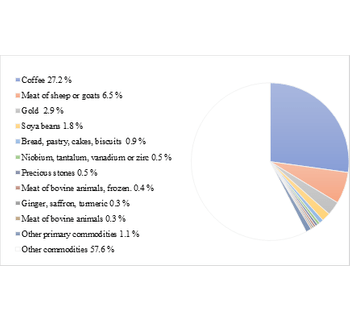
Share of Top Ten Primary Commodities in Ethiopia’s Total Exports in 2018

Source: Computed from United Nations Commodities trade Database, United Nations DESA. Data retrieved in July 2020 from https://comtrade.un.org/data
Download image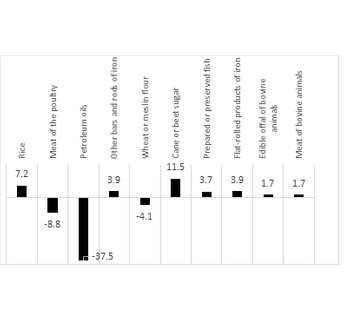
Change in predicted Prices in 2020 for Top Ten Primary Commodities Imported by Comoros
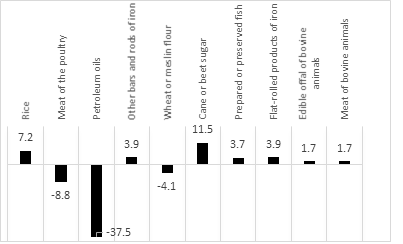
Source: Computed from the Commodity Market Outlook (World Bank). Data retrieved in July 2020 from https://www.worldbank.org/en/research/commodity-markets
Note: Differences between prices forecast in April 2020 and in October 2019 are in percentage points (pp).
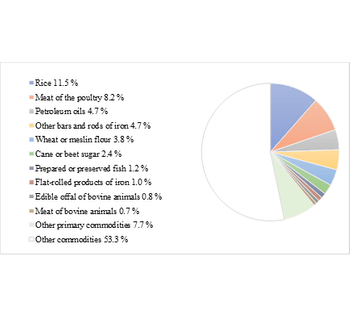
Share of Top Ten Primary Commodities in Comoros’s Total Imports in 2019

Source: Computed from United Nations Commodities trade Database, United Nations DESA. Data retrieved in July 2020 from https://comtrade.un.org/data
Download image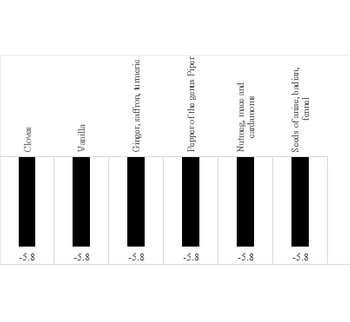
Change in predicted Prices in 2020 for Top Primary Commodities Exported by Comoros
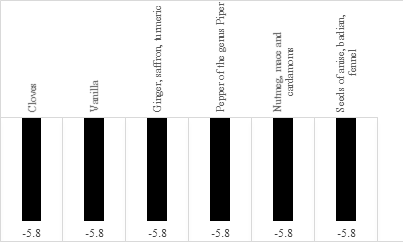
Source: Computed from the Commodity Market Outlook (World Bank). Data retrieved in July 2020 from https://www.worldbank.org/en/research/commodity-markets
Note: Differences between prices forecast in April 2020 and in October 2019 are in percentage points (pp).
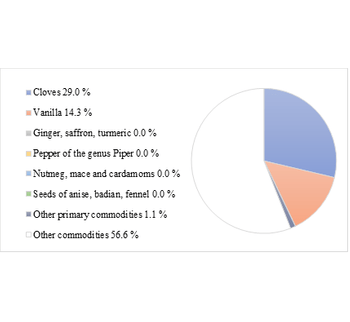
Share of Top Primary Commodities in Comoros’s Total Exports in 2019

Source: Computed from United Nations Commodities trade Database, United Nations DESA. Data retrieved in July 2020 from https://comtrade.un.org/data
Download image
Percentage point variation in 2020 predicted prices for primary commodities between April 2020 and October 2019 forecasts by the World Bank.
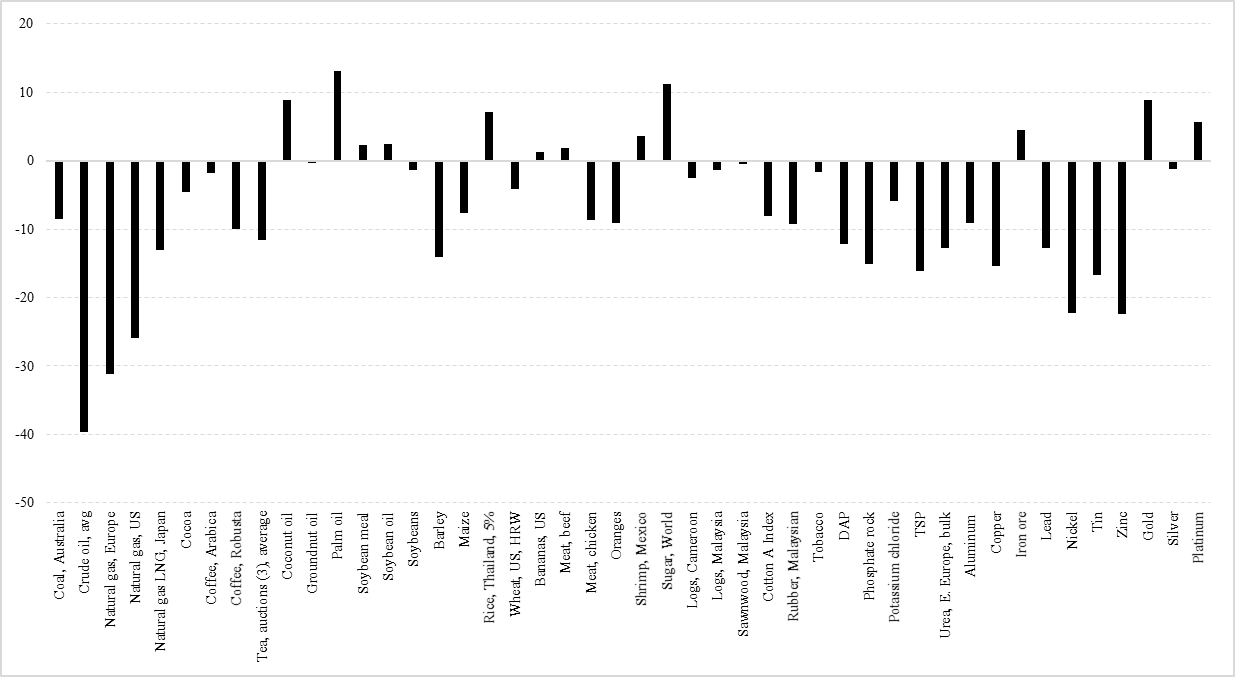
Source: Computation from the World Bank Commodity Price Forecasts, October 2019 and April 2020. Data retrieved on July 2020 from https://www.worldbank.org/en/research/commodity-markets
Download image
Share of Top Ten Primary Commodities in Nigeria’s Total Exports in 2018
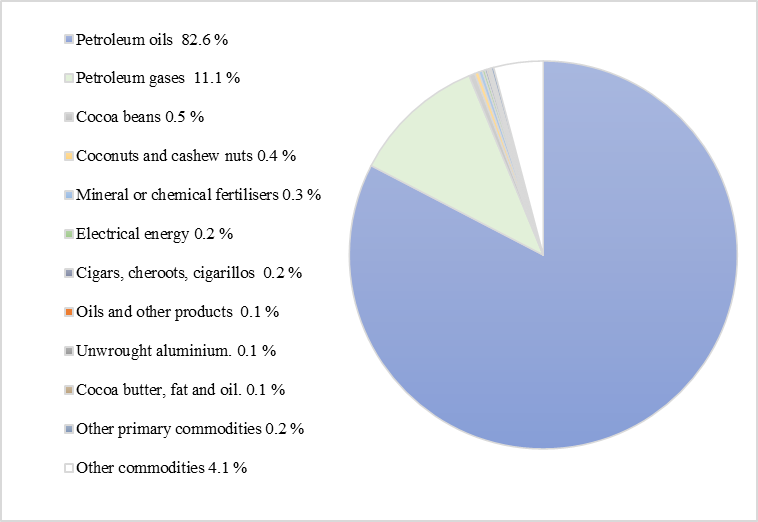
Source: Computed from United Nations Commodities trade Database, United Nations DESA. Data retrieved in July 2020 from https://comtrade.un.org/data
Download image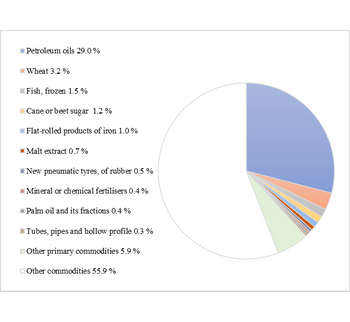
Share of Top Ten Primary Commodities in Nigeria’s Total Imports in 2018

Source: Computation from United Nations Commodities trade Database, United Nations DESA. Data retrieved in July 2020 from https://comtrade.un.org/data
Download image
Changes in Predicted Prices in 2020 for Top Ten Primary Commodities Exported by Nigeria

Source: Computed from the Commodity Market Outlook (World Bank). Data retrieved in July 2020 from https://www.worldbank.org/en/research/commodity-markets
Note: Differences between prices forecast in April 2020 and in October 2019 are in percentage points (pp)
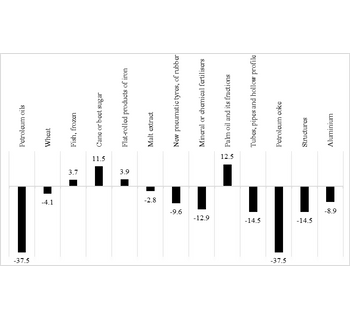
Predicted Prices in 2020 for Top Ten Primary Commodities Imported by Nigeria
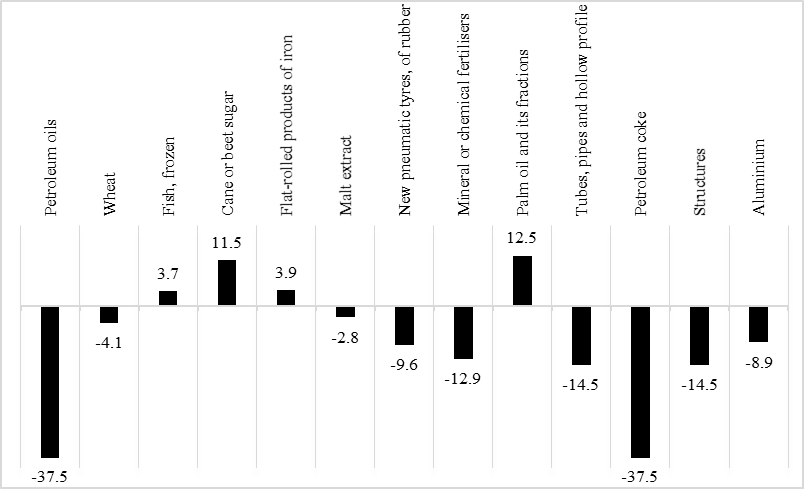
Source: Computed from the Commodity Market Outlook (World Bank). Data retrieved in July 2020 from https://www.worldbank.org/en/research/commodity-markets
Note: Differences between prices forecast in April 2020 and in October 2019 are in percentage points (pp)
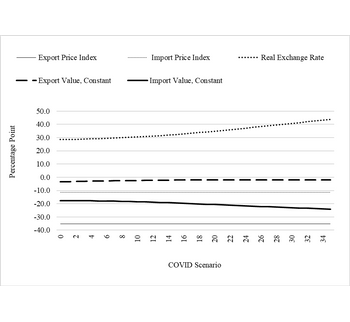
External Trade Effects in Nigeria, Percentage Point Difference Between COVID and Baseline Scenarios
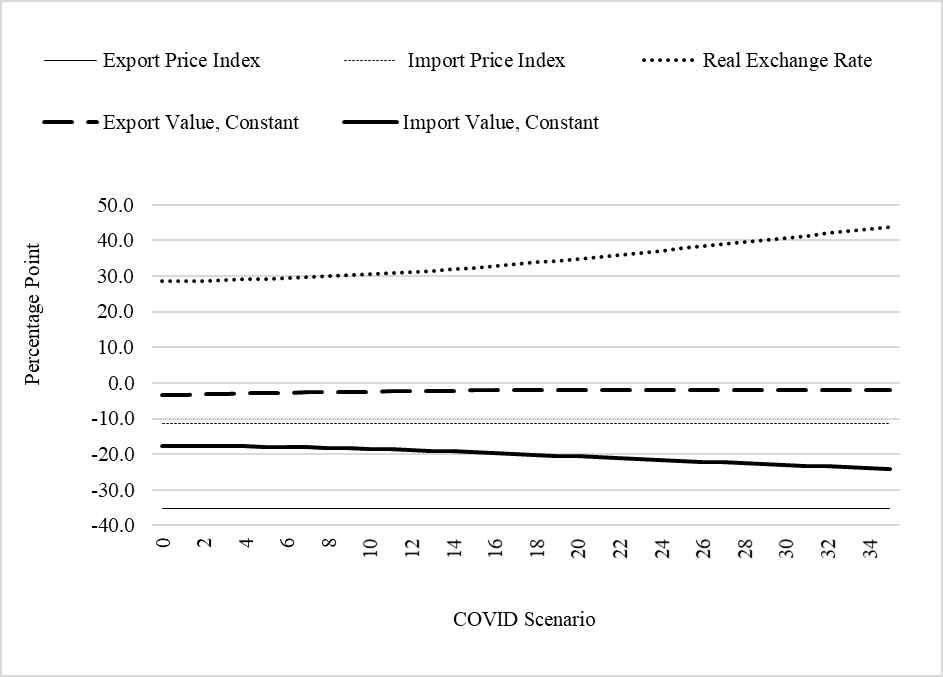
Source: Simulation Results (August 2020).
Note: The COVID scenarios (1 to 36) combine different values of trade (import and export) elasticities. Scenario 1 uses the highest values and scenario 36 the lowest elasticity values. Export price refers to the average weighted F.O.B. price indexes. Import price refers to the average weighted C.I.F. price indexes. Export and import values are in constant 2019 prices

GDP Growth Effect in Nigeria, Percentage Point Difference Between COVID and Baseline Scenarios
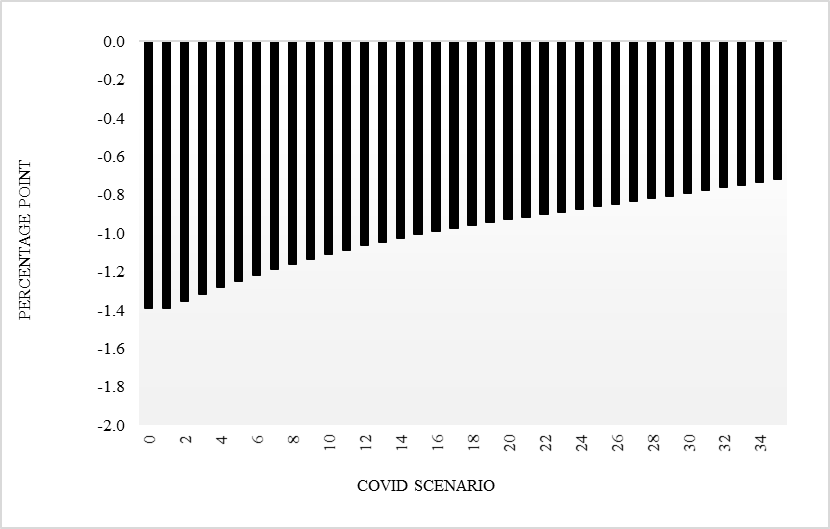
Source: Simulation Results (August 2020).
Note: The COVID scenarios (1 to 36) combine different values of trade (import and export) elasticities across commodities to mimic the responsiveness of the Nigerian economy to changing global market conditions. Scenario 1 uses the highest and scenario 36 the lowest elasticity values. The remaining scenarios in combine difference values of elasticities between the two extremes. Export price refers to the average weighted F.O.B. price indexes. Import price refers to the average weighted C.I.F. price indexes. Export and import values are in constant 2019 prices.
Past webinars
Other workstreams
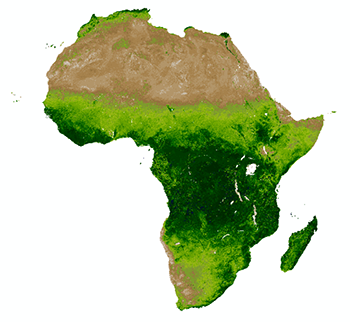

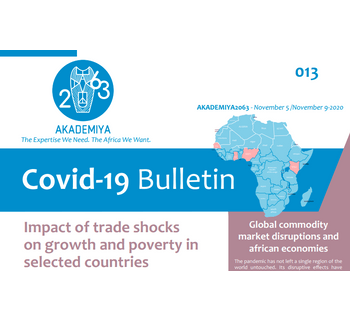

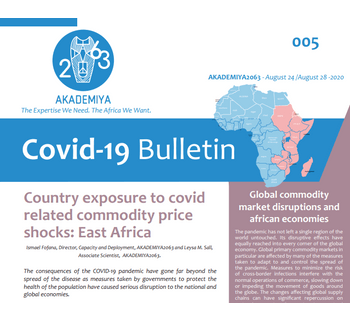
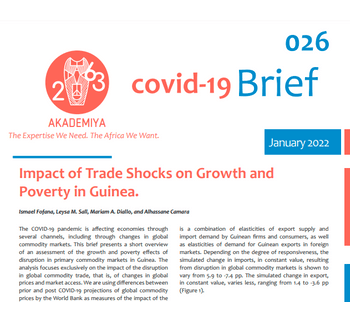
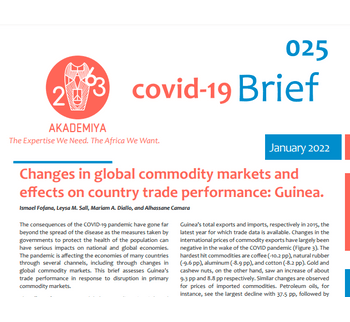
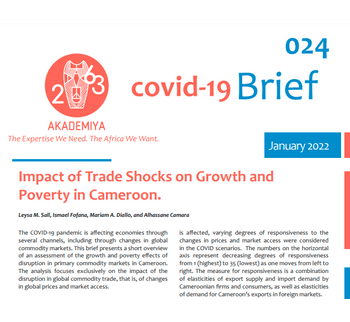
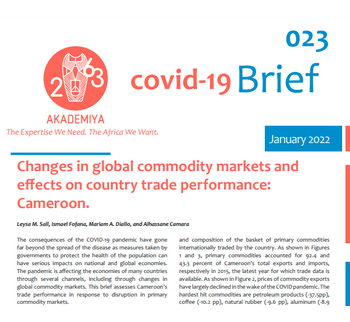
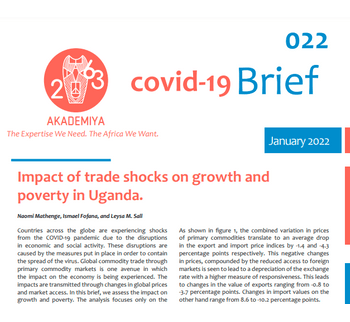
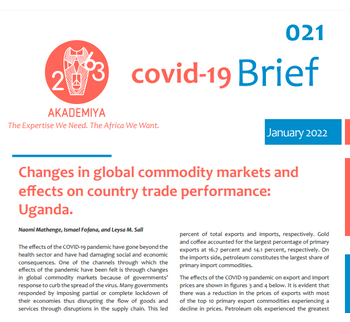


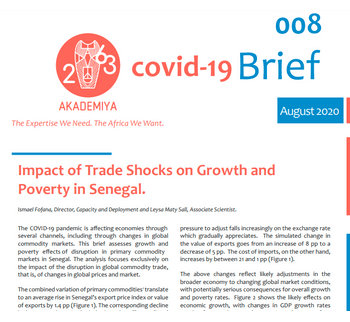
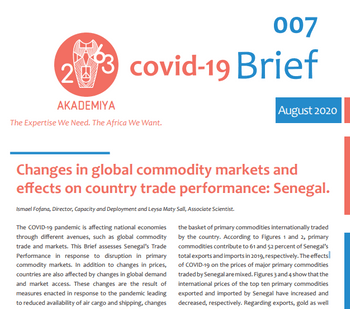
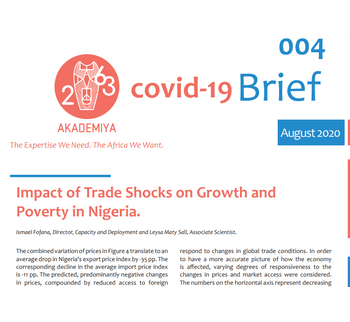

.png)
.png)
